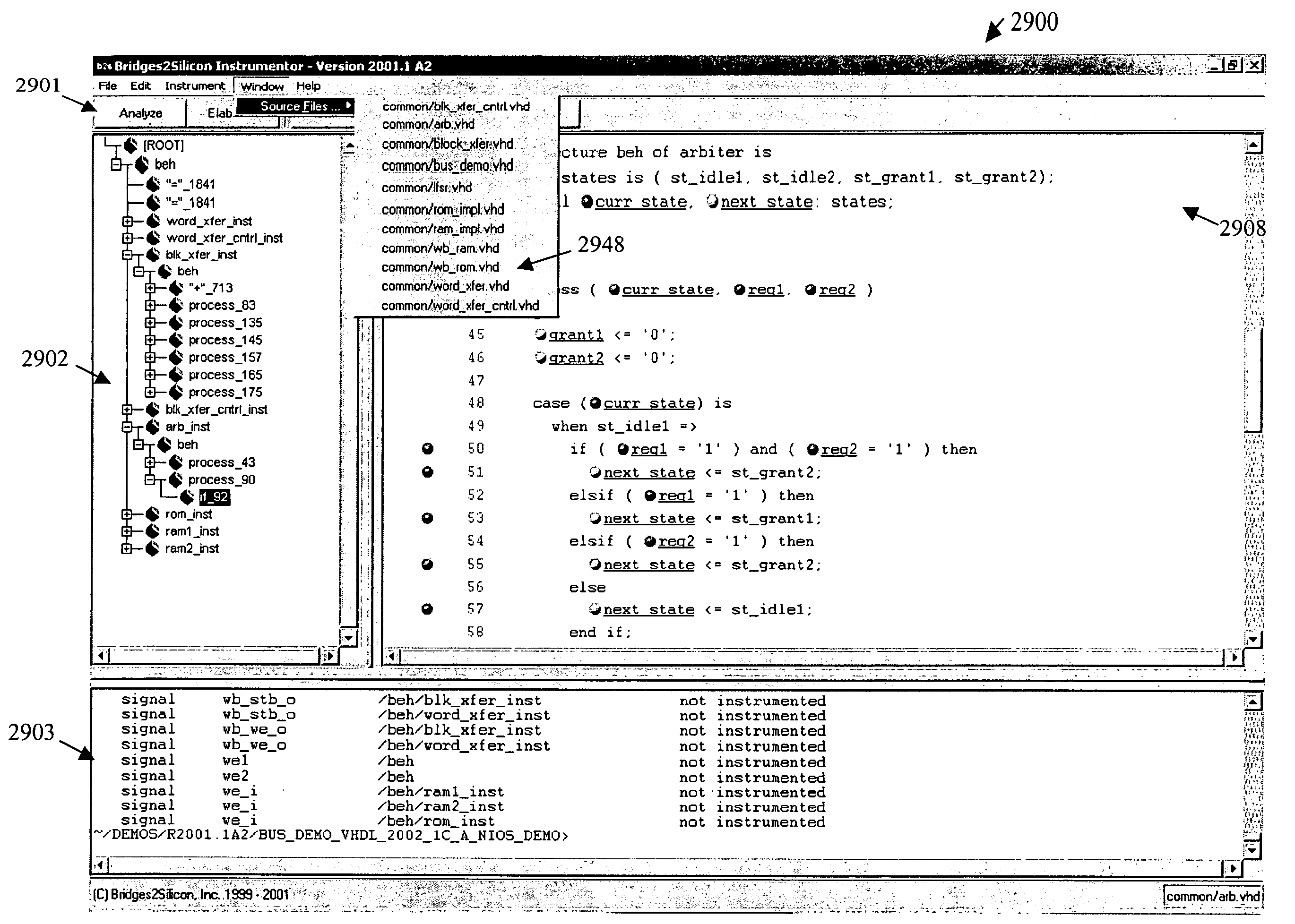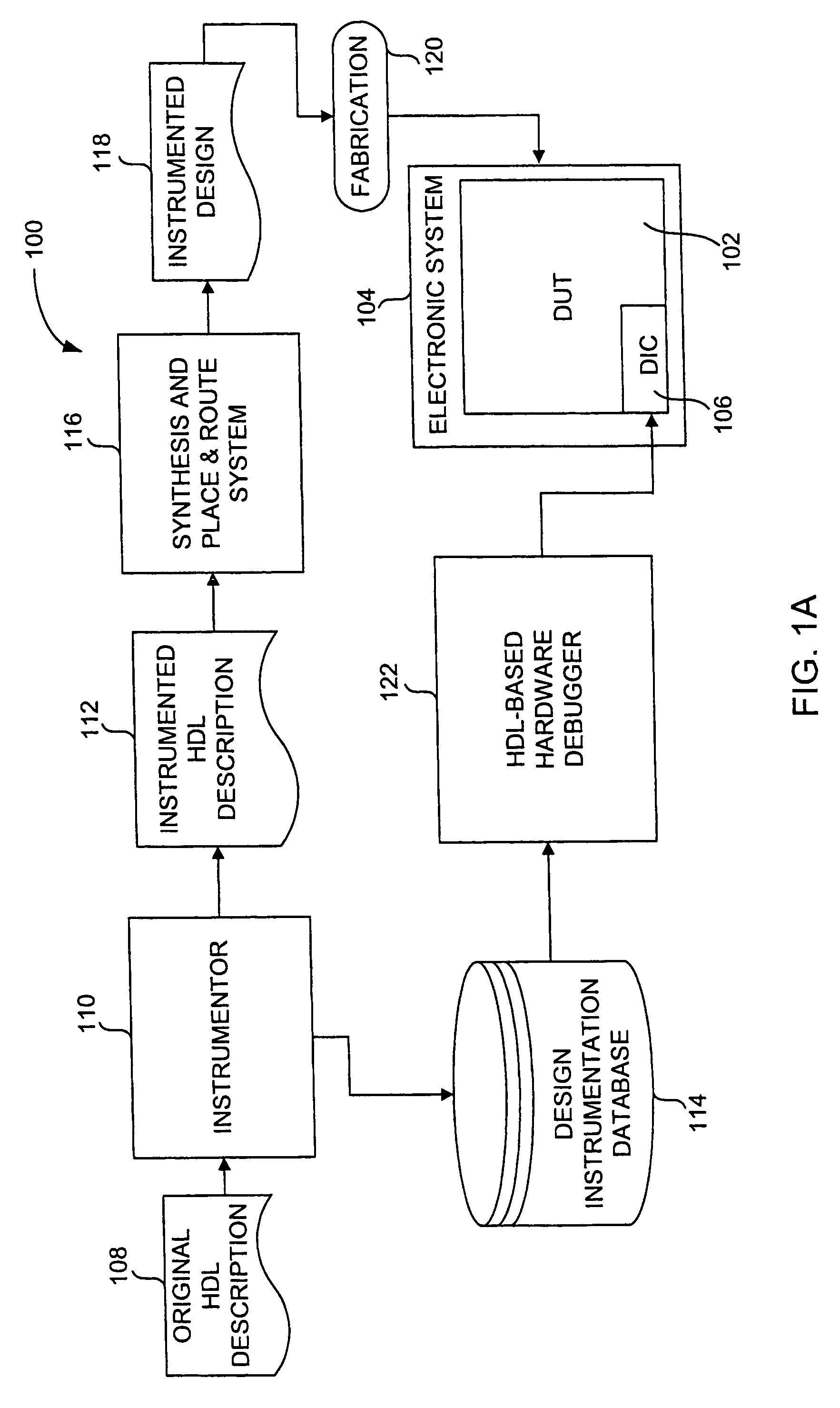Method and user interface for debugging an electronic system
a technology for electronic systems and user interfaces, applied in the field of electronic systems, can solve the problems of limited capability of software debuggers, limited concurrency of software debuggers, and designers of electronic systems that observe functional failures, and achieve the effect of facilitating correction or adjustment of hdl descriptions
- Summary
- Abstract
- Description
- Claims
- Application Information
AI Technical Summary
Benefits of technology
Problems solved by technology
Method used
Image
Examples
Embodiment Construction
[0081]The present invention relates to techniques and systems for analysis, diagnosis and debugging fabricated hardware designs at a Hardware Description Language (HDL) level. Although the hardware designs (which were designed in HDL) have been fabricated in integrated circuit products with limited input / output pins, the invention enables the hardware designs within the integrated circuit products to be comprehensively analyzed, diagnosed, and debugged at the HDL level at speed. The ability to debug hardware designs at the HDL level facilitates correction or adjustment to the HDL of the hardware designs.
[0082]The following discussions will be made clearer by a brief review of the relevant terminology as it is typically (but not exclusively) used. Accordingly, to assist readers in understanding the terminology used herein, the following definitions are provided.
[0083]“Software” is defined as but not limited to programming language content written using a programming language. Example...
PUM
 Login to View More
Login to View More Abstract
Description
Claims
Application Information
 Login to View More
Login to View More - R&D
- Intellectual Property
- Life Sciences
- Materials
- Tech Scout
- Unparalleled Data Quality
- Higher Quality Content
- 60% Fewer Hallucinations
Browse by: Latest US Patents, China's latest patents, Technical Efficacy Thesaurus, Application Domain, Technology Topic, Popular Technical Reports.
© 2025 PatSnap. All rights reserved.Legal|Privacy policy|Modern Slavery Act Transparency Statement|Sitemap|About US| Contact US: help@patsnap.com



